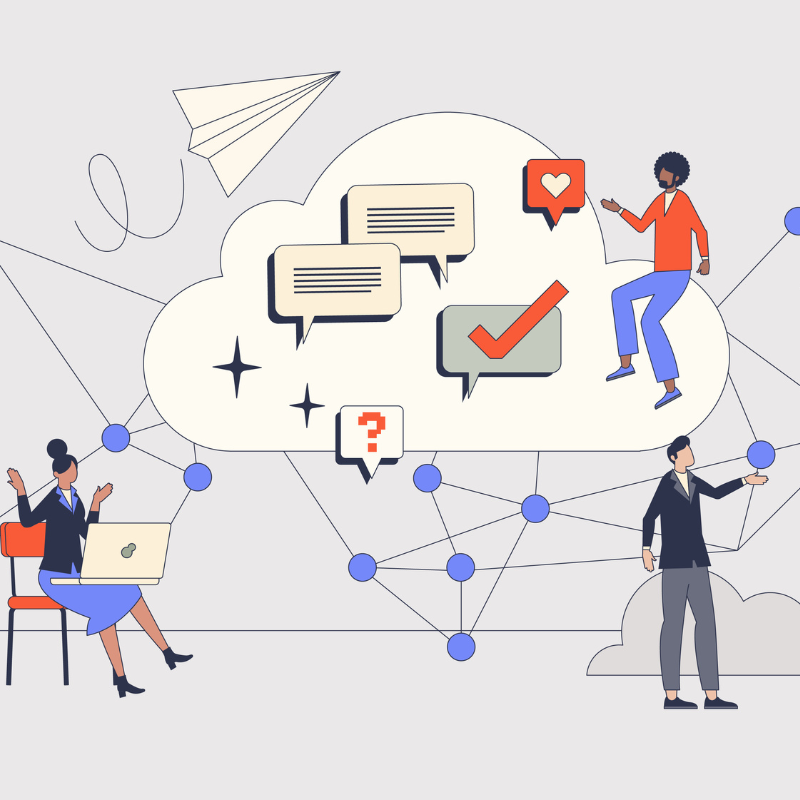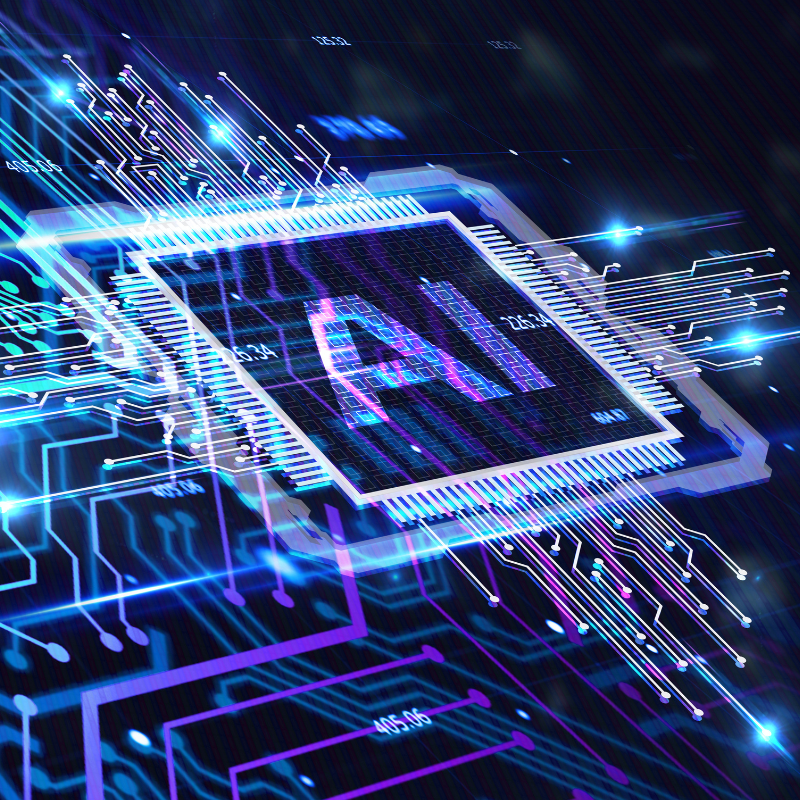When discussing AI at work, specifically Generative AI (Gen AI) and the future of work, there are significant opportunities for augmentation, acceleration, automation and analysis across various sectors:
- Augmentation: Gen AI can enhance human capabilities, particularly in creative, STEM and business fields. It can assist in generating new ideas, designs and solutions, thereby augmenting the creative process.
- Acceleration: AI at work can speed up processes that traditionally take a long time, such as data analysis, research and development. This acceleration can lead to faster innovation cycles and quicker time-to-market for new products and services.
- Automation: Routine and repetitive tasks can be automated, freeing up human workers to focus on more complex and strategic activities. This can lead to increased productivity and efficiency in the workplace.
- Analysis: AI’s ability to analyze large datasets can uncover insights that might be missed by humans. This can be particularly useful in fields like healthcare, finance and market research, where data-driven decisions are crucial.
The future of work with Gen AI is likely to see a shift in job roles rather than a significant reduction in employment. Workforce development and training will be needed to equip workers with the skills necessary to thrive in an AI-augmented workplace. Additionally, there will be an increased demand for professionals who can work alongside AI, leveraging its capabilities to enhance their own.
It’s important to note that while AI at work presents opportunities, it also brings challenges that need to be addressed, such as ensuring equitable access to training and managing the ethical implications of AI in the workplace.
AI Adoption
The barriers to AI adoption in organizations are multifaceted and can include cultural, technological and incentive-related challenges:
- Cultural: Resistance to change is a significant barrier. Employees may fear job displacement or believe that AI could never replicate the nuanced understanding of a human worker. Overcoming this requires fostering a culture that views AI as a tool for augmentation rather than replacement.
- Technological: The tech stack can also be a barrier, particularly if the existing infrastructure doesn’t support AI integration or if there’s a lack of in-house expertise to manage and analyze data. This often necessitates significant investment in both technology and training.
- Incentives: The lack of clear incentives for adopting AI at work can hinder its implementation. If the benefits of AI are not well communicated or if they don’t align with the organization’s strategic goals, there will be little motivation to adopt such technologies.
Addressing these barriers often requires a comprehensive approach that includes:
- Educating and training employees to work alongside AI.
- Updating the technological infrastructure to support AI.
- Aligning AI adoption with the organization’s strategic objectives to create clear incentives for its use.
By tackling these issues, organizations can prepare for successful AI integration, which will improve efficiency, innovation and competitive advantage.
Develop an AI Strategy and Roadmap for Your Business
Are you ready to join the AI revolution? Early and effective AI adoption is crucial for maintaining a competitive edge.
Impact of AI on Jobs
The impact of AI on jobs is a complex issue with the potential for both job displacement and job creation. Here’s a summary of the current understanding:
- Job Displacement: AI is likely to automate many jobs, particularly those with routine elements such as regulatory compliance, clerical work, simple data collection and summary tasks. About 60% of jobs in advanced economies may be impacted by AI, with a significant portion potentially facing reduced demand.
- Job Creation: On the other hand, AI is also expected to create new jobs. For instance, the ranks of AI-linked roles like data scientists, big data specialists and business intelligence analysts are projected to grow significantly. Nearly half of the companies surveyed expect AI to create jobs within the next five years.
- Economic Impact: While AI could replace the equivalent of 300 million full-time jobs, it may also lead to new jobs and a productivity boom.
- Workforce Transition: The transition to new jobs created by AI will require workforce development and training. The skills needed for AI-augmented roles will be different, and there will be a need for professionals who can work alongside AI, leveraging its capabilities.
The 2024 Work Trend Index Annual Report from Microsoft and LinkedIn suggests that instead of replacing jobs, AI is predominantly reshaping them for the vast majority of individuals. It proposes that their future roles may be in fields that have yet to emerge:
- Globally, skills are projected to change by 50% by 2030 (from 2016)—and generative AI is expected to accelerate this change to 68%.
- More than two-thirds (68%) of this year’s LinkedIn’s Jobs on the Rise (fastest-growing roles in the US) didn’t exist 20 years ago.
- 12% of recruiters say they are already creating new roles tied specifically to the use of generative AI.
- Head of AI is emerging as a new must-have leadership role—a job that tripled over the past five years and grew by more than 28% in 2023.
In conclusion, AI at work is not expected to eliminate all jobs but rather transform the job landscape. Some jobs may disappear, but new ones will arise, and the nature of many existing jobs will change. The key to a smooth transition will be preparing the workforce for this new AI-augmented environment.
Ensuring Ethical Deployment
To ensure the responsible use and deployment of Gen AI, several guardrails should be in place:
- Bias Mitigation: Develop tools and datasets to identify and mitigate unfair bias in machine learning models. This includes regular assessments and third-party input to account for societal context.
- Red Teaming: Employ in-house and external experts to conduct red-teaming exercises that test for vulnerabilities and potential areas of abuse, including cybersecurity threats and societal risks such as fairness.
- Policies and Enforcement: Create clear policies outlining prohibited uses of Gen AI at work, particularly regarding harmful, inappropriate, misleading or illegal content. Implement systems to detect and prevent content that violates these policies.
- Data Privacy: Ensure controls are in place to prevent leakage of personally identifiable information (PII) and sensitive data that may be included in training datasets.
- Intellectual Property Protection: Address the risk of IP infringement by controlling what data is incorporated back into the training set and preventing the use of IP-infringing content in model outputs.
- Security Against Attacks: Protect against adversarial attacks, such as prompt injection attacks, by securing connections to APIs or databases and processing content responsibly.
- Youth Safeguards: Implement additional safeguards for younger users, limiting outputs related to topics like bullying and age-gated or illegal substances.
These guardrails are akin to safety barriers, guiding AI for work toward beneficial outcomes while preventing potential harm. They are essential for the safe and ethical use of Gen AI, ensuring that it operates within legal boundaries and societal expectations.
In the future of work, human-to-machine interactions are expected to become more collaborative and intuitive thanks to Microsoft Copilot, with AI and automation being integrated as partners rather than mere tools or replacements for human workers. Here’s what we can anticipate:
- Human-to-Machine Interactions: These will likely be characterized by increased use of natural language processing, allowing humans to communicate with machines in a more conversational manner. Augmented reality (AR) and virtual reality (VR) may also play a role in enhancing these interactions, providing immersive and interactive experiences that blend the physical and digital worlds.
- Machine-to-Machine (M2M) Interactions: These interactions, often referred to as M2M, involve machines communicating and making decisions without human intervention. They are already prevalent in areas like industrial automation, smart homes and Internet of Things (IoT) devices. As AI systems become more sophisticated, M2M interactions will become more complex and autonomous, handling tasks such as predictive maintenance, logistics and energy management.
Will We Know When M2M Interactions Have Occurred?
In many cases, M2M interactions will be designed to operate seamlessly and autonomously, meaning that they may not always be apparent to humans. However, monitoring and management systems are often in place to track these interactions, especially in industrial and commercial settings where such oversight is crucial for efficiency and safety.
In consumer applications, transparency regarding M2M interactions may be provided through user interfaces that inform users of what is happening, such as notifications on a smartphone when a smart home system adjusts the temperature or lighting based on learned preferences.
Overall, the future of AI at work, including Copilot, will likely see a blend of human creativity and machine efficiency. Clear communication channels will ensure that humans remain in the loop, especially for critical decision-making processes. The key will be designing systems that are not only intelligent but also transparent and trustworthy.
Contact Us
Stay ahead in the rapidly changing landscape of AI. Contact our Digital Workplace Solutions Team today to learn how we can help with AI strategy, implementation and adoption.




